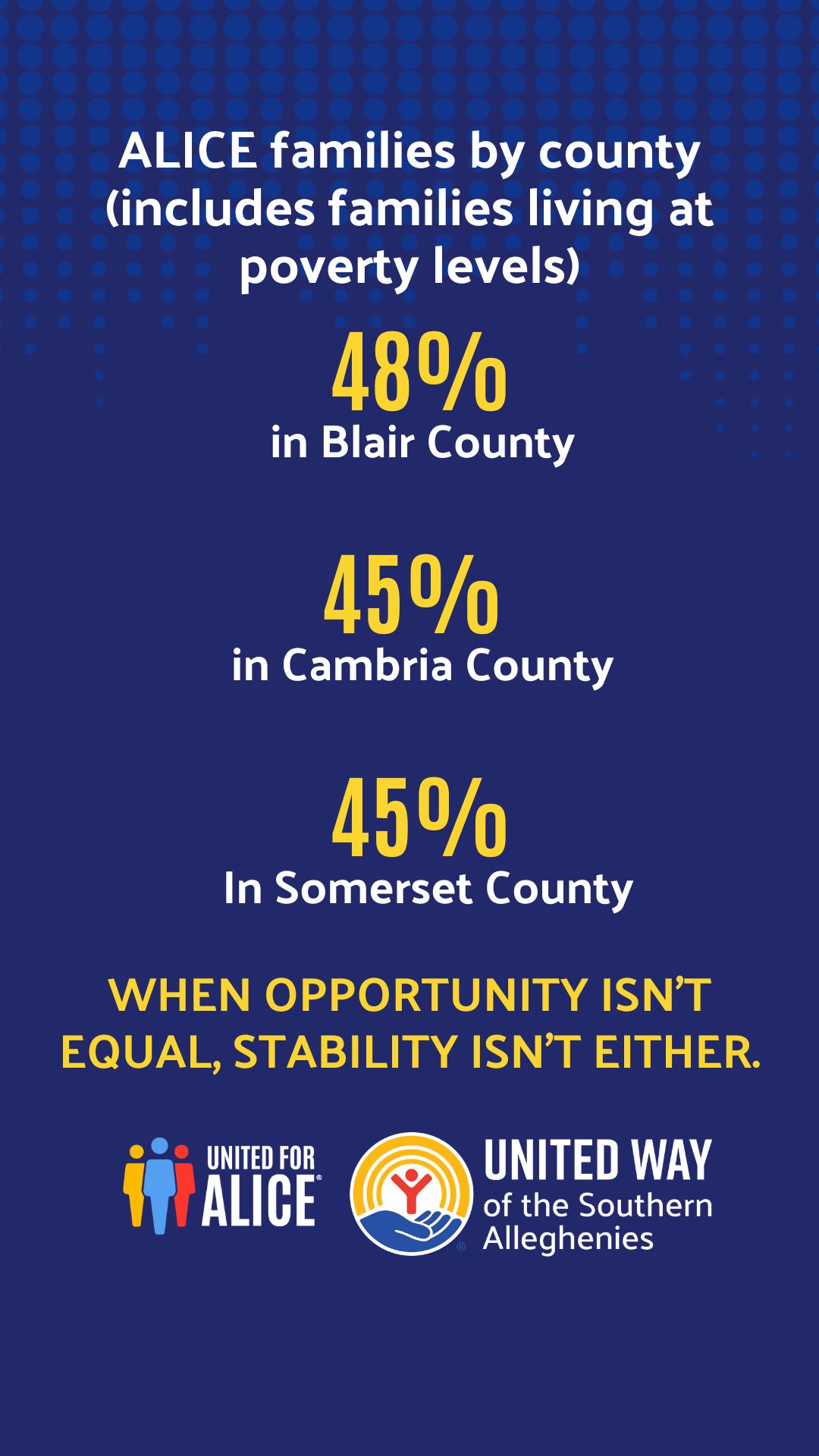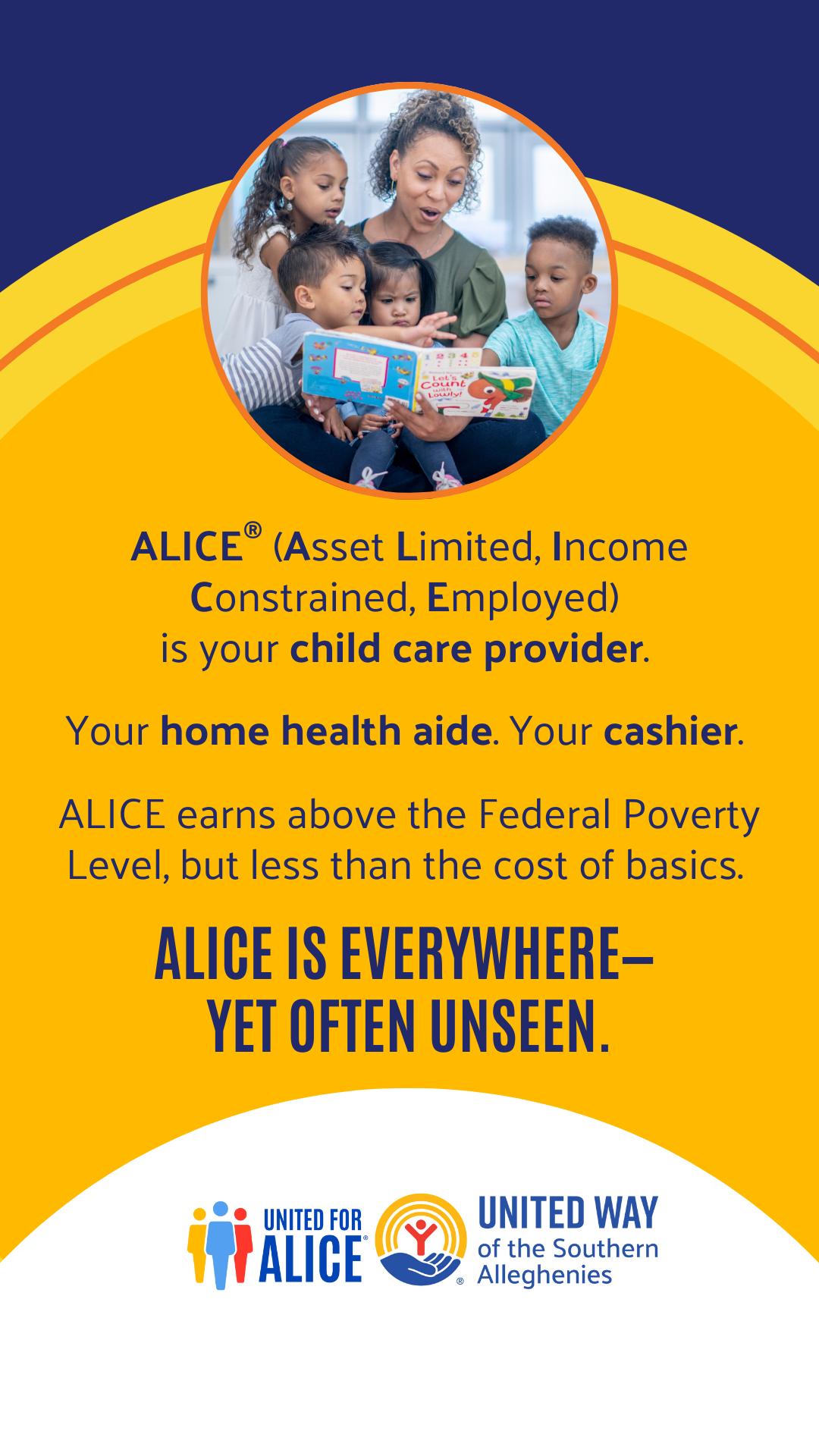


By UNITED WAY
From the United Way of Pennsylvania Annual ALICE Report
In 2023, based on the Federal Poverty Level (FPL), 12% of Pennsylvania households were defined as being in poverty.
Yet this measure failed to account for an additional 28% of the state’s households — more than twice as many — that were also
experiencing financial hardship. These households are ALICE: Asset Limited, Income Constrained, Employed — earning above
the FPL, but not enough to afford basic expenses in the county where they live.
Between ALICE households and households living in poverty, an estimated 40% of households in Pennsylvania were below
the ALICE Threshold in 2023. This rate placed Pennsylvania 24th among all states and the District of Columbia (with 1st representing the lowest rate of hardship). Households below the Threshold are forced to make impossible choices — like deciding
whether to pay for utilities or a car repair, whether to buy food or fill a prescription.
Households below the ALICE Threshold are in every state and county across the U.S. and represent all demographic groups. Workers below the ALICE Threshold often perform the jobs that keep our economy functioning smoothly — they are child care providers, food service workers, cashiers, personal care aides, delivery drivers, and more. Their stories capture the systemic and structural barriers to financial stability, and the struggles and resilience of families experiencing financial hardship.
Important links
United Way is here to help
United Way programming, sustained by our generous supporters, provides vital support in key areas. A package of diapers each month often unlocks the ability for children to attend day care, preventing lost work hours for parents or guardians. There are 255 households taking part in the diaper program monthly. There are also services that provide food, utility assistance, and even warm coats for kids that are helping families each day.
Educational services offer trained professionals who are ensuring that hundreds of kids succeed pre-kindergarten while meeting goals along the way.
It's part of the way that together, we can mitigate the struggles ALICE families face each day in our community.
